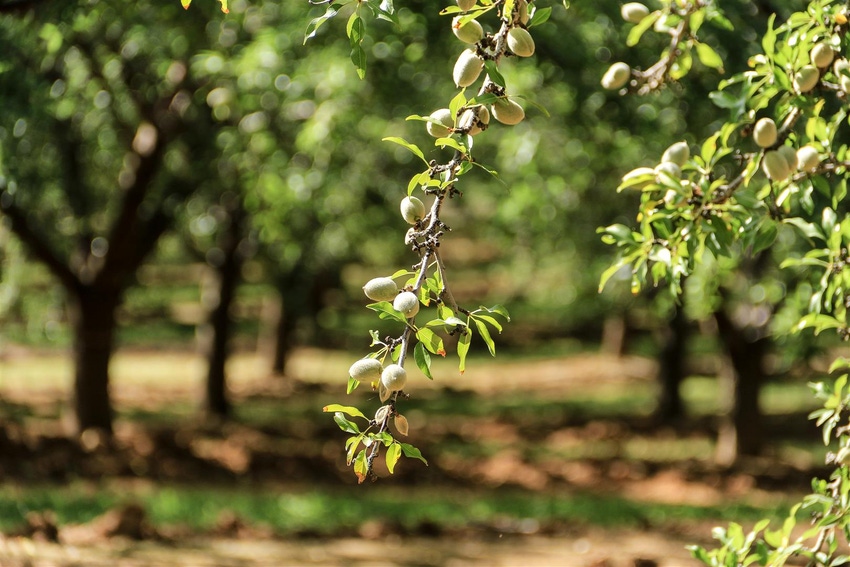
Those predicting a 2.1 to 2.2 billion pound almond crop may be a bit surprised at the U.S. Department of Agriculture’s latest estimate, according to one almond industry official. Still, the prediction of 2.05 billion pounds, if it holds, could make this year’s crop a record.
The objective almond forecast issued July 6 was 2.5 percent above the subjective estimate of two billion pounds issued in May, and 7.9 percent higher than the 2015 crop which came in at 1.9 billion pounds.
Paul Ewing, sales and grower relations manager with RPAC Almonds in Los Banos, says the more bullish estimate could be good for the industry.
RPAC Almonds grows, hulls, shells, processes and exports almonds.
“The estimate does bring expectations down to a degree,” Ewing said. “This could also mean almonds may be a little underpriced.”
The average grower price prior to the announcement was about $2.25 per pound, Ewing said.
The USDA figure has an 80 percent confidence rating, meaning the crop could be as light as 1.89 billion pounds or as heavy as 2.21 billion pounds. Last year’s estimate of 1.8 billion pounds was lighter than actual receipts by about 100 million pounds.
Michael Kelley, president and chief executive officer of the Central California Almond Growers Association, a sheller and hulling cooperative based in Kerman, likes the lower estimate in large part because he still has hulls left to sell.
At between $60 and $70 per ton, hull prices are running about $100 per ton lower than this time last year. For dairy farmers who feed hulls to their herds, this is good news. Even at greatly-increased portions of a dairy’s total mixed ration, the state’s dairy industry is not able to consume the large supply of almond hulls.
Martin Pohl, a partner with Hughson Nut Company in Hughson, Calif., was pleased with the 2.05 billion pound number.
“I think from our point of view it was where we would like to see it,” Pohl said. “I think some in our industry thought it would be higher; I think this will stabilize the price.”
Pohl also referenced the requested 1-cent hike in the almond assessment – to four cents per pound total, up from three cents – which the Almond Board of California receives each year to market almonds.
Pohl says the almond industry needs to prepare itself for the day when almond yields are much higher than they are today – perhaps as high as three billion pounds in the next few years.
“We have to build our industry for the coming yields,” he said.
According to the USDA report, almond bearing acreage is up slightly to 900,000, a figure Ewing says might not be entirely accurate given the rate of removals due to water availability and new plantings in areas that might not have been sampled by the USDA.
Ewing suspects actual bearing acreage could be higher.
Nut set across the state appears to be statistically identical from north to south, according to the USDA.
This year’s figure comes in a season where growers experienced a true “flash-bloom.” Trees began blooming in mid-February, in spite of a warm period beginning in late January and extending into early February.
The flash-bloom stressed pollination efforts as trees were done blooming in days instead of weeks. There were some reports of bee shortages.
Butte and Padre varieties have the heaviest nut sets, according to the USDA report, at over 7,000 almonds per tree. The Nonpariel variety has the lightest nut set of the varieties sampled at about 5,500 nuts per tree. Still, kernel size in the Nonpariel appears to be higher than the last two years and significantly higher than the 2013 crop.
The objective survey is commissioned by the Almond Board of California and was performed between May 23 and June 23 on 1,746 trees across 873 orchards.
Sampling procedures use random selections and protocols to ensure statistical efficiency and accuracy.
The full USDA-NASS report can be found online.
About the Author(s)
You May Also Like






